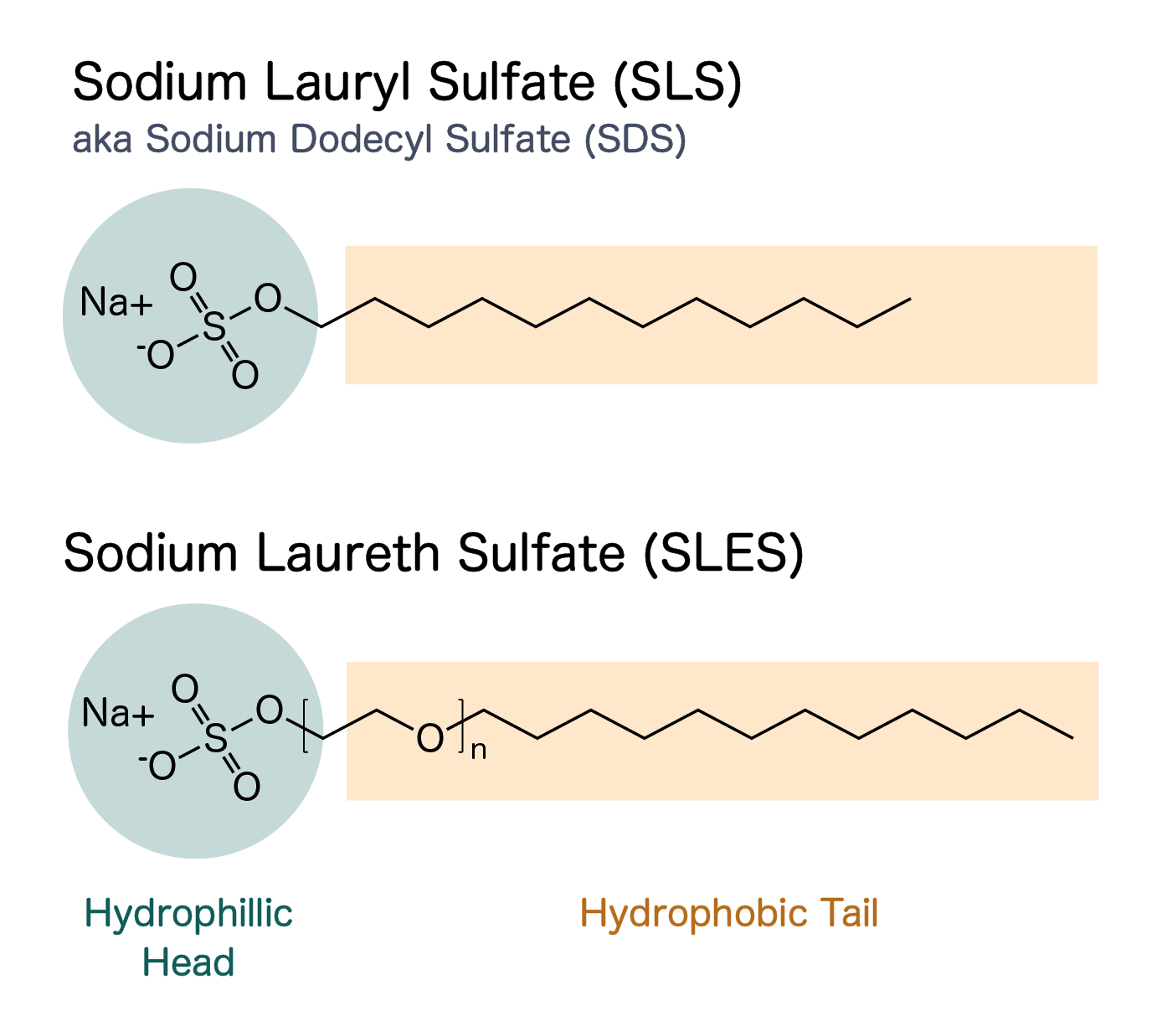Approximately 20 million tons of surfactants are produced annually, and are found in a wide range of cleaning and personal care products. Surfactants are amphiphilic compounds that contain a hydrophobic (water-hating) tail and a hydrophilic (water-loving) head. Amphipathic molecules allow detergents, soaps, shampoos, and many other cleaning products to carry away substances that cannot be washed away from water itself.
Currently, about 50% of surfactants are petroleum derived, and rely on non-renewable fossil fuels for their production. This has prompted the industry to seek greener alternatives. An increasing amount of surfactants are now plant-derived, with the most common sources being palm and coconut. Despite these surfactants being “plant-derived”, they often lack the desired sustainability and are associated with their own negative environmental impact.
Sustainability is having a growing impact on consumer purchasing decisions. As such, both product manufacturers and consumers need to be aware of the hidden environmental impact of the chemical production as we strive to produce and consume more sustainable products.
Common surfactants in cleaning and personal care
There are a variety of surfactants used in detergents and soaps, which can be derived from either petroleum or plant-derived oils. Most plant-derived surfactants are produced from the fatty acids extracted from palm or coconuts. Common synthetic surfactants in cleaning and personal care products include Sodium Lauryl Sulfate (SLS), Sodium Laureth Sulfate (SLES), and Sodium Coco Sulfate (SCS). These chemicals are effective at lifting dirt from skin and surfaces, and can alter the foaming properties of products (such as enhancing lather in shampoos).
The manufacturing of plant-derived SLS and SLES begin with lauric acid, which is the main fatty acid found in palm kernel oil and coconut oil. Lauric acid then undergoes a series of chemical reactions to obtain SLS. Though SLS is a highly effective surfactant, it can be skin irritant depending on product formulation.
Further chemical transformation of SLS through a process called ethoxylation results in SLES – a surfactant that is less harsh than SLS with similar cleaning properties. However this ethoxylation reaction also results in 1,4-dioxane as a by-product, which is non-biodegradable and a potential carcinogen. Modern manufacturing processes have improved to reduce 1,4-dioxane contamination in products reaching the consumer, however moving away from such chemicals like SLES is needed to avoid the production and potential exposure to such contaminants.

What about SCS? Unlike SLS and SLES, SCS actually represents a mixture of synthetic surfactants since it is derived from a mixture of fatty acids rather than purified lauric acid. The chemical reactions used to convert the extracted fatty acids to SCS is the same as those used for SLS. Since lauric acid is one of the predominant fatty acids extracted from coconut (or in some cases, palm), SLS is still one of the main surfactants present in SCS!
Plant-derived doesn’t equal sustainable
The words ‘green’ and ‘plant-derived’ are used to market consumer products as environmentally friendly to consumers; implying that the chemicals are sustainable. Unfortunately this is typically not the case. While plant-derived synthetic surfactants avoid the use of petroleum, they are associated with significant negative environmental impacts of their own.
Most “plant-derived” surfactants are derived from palm fruits, since it is a very efficient crop and produces the greatest amount of plant-derived oil per area of farm land. Two types of oil can be produced: palm oil (extracted from the fruit) and palm kernel oil (extracted from the kernel/stone in the middle of the fruit). Palm kernel oil is most frequently used in the production of plant-derived surfactants. The necessary palm trees are only grown in the tropics, with farms in Indonesia and Malaysia supplying ~85% of the global supply of palm oil.
The environmental negative impact of palm oil production originates from the massive rainforest deforestation and resultant impact on local wildlife and biodiversity. Furthermore, converting rainforests to palm tree plantations can contribute to increased CO2 emissions.
Due to the negative environmental impact, the Roundtable of Sustainable Palm Oil (RSPO) was established in 2004 to recognize sustainable palm oil production and set out best practices for sourcing and production. However these sustainability certifications have been criticized due to evidence that deforestation was (and is still) associated with the production of palm tree plantations.
Biosurfactants: An alternative to palm-oil and petroleum derived surfactants?
As more and more consumers are becoming aware of the environmental impact of their products, there is a growing demand for suitable sustainable alternatives. If plant-derived surfactants are not necessarily sustainable (and we don’t want to go back to petroleum derived chemicals), then what alternatives are there?
The answer is biosurfactants. Biosurfactants are surfactants of biological origin, meaning they are produced by and naturally derived from various microbes (bacteria, yeast, and fungi). There are many types of biosurfactants with differing properties, and possess desirable properties for cleaning and personal care products including biodegradability, low toxicity, and moisturizing effects. Biosurfactant production is not dependent on petroleum, nor the deforestation associated with plant-derived synthetic surfactants.
At Dispersa, we are producing biosurfactants for use in cleaning and personal care products, and believe they are the way forward for more sustainable chemical production.
Additional Reading (External Links):
- The “Greenwashing” Effect (Schwartz J, 2020): https://www.mcgill.ca/oss/article/environment/greenwashing-should-not-be-whitewashed
- 8 Things to know about palm oil (World Wildlife Foundation, 2020), https://www.wwf.org.uk/updates/8-things-know-about-palm-oil
- Greenhouse gas emissions resulting from conversion of peat swamp forest to oil palm plantation (Cooper et al, 2020): https://www.nature.com/articles/s41467-020-14298-w
- Claim that coconut oil is worse for biodiversity than palm oil sparks furious debate (Rochmyaningsih D, 2020): https://www.sciencemag.org/news/2020/07/claim-coconut-oil-worse-biodiversity-palm-oil-sparks-furious-debate
- Microbial Biosurfactants in Cosmetic and Personal Skincare Pharmaceutical Formulations (Adu et al, 2020): https://www.ncbi.nlm.nih.gov/pmc/articles/PMC7696787/
- Certified “sustainable” palm oil took the place of endangered Bornean and Sumatran large mammals habitat and tropical forests in the last 30 years (Gatti et al, 2020): https://doi.org/10.1016/j.scitotenv.2020.140712